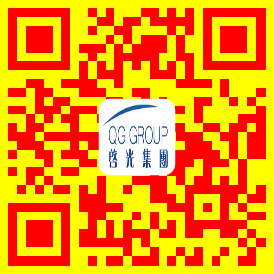Leveraging DMAEE for Advanced Polyurethane Spandex Fiber Development
Abstract: This paper explores the utilization of Dimethylaminoethanol (DMAEE) in enhancing polyurethane spandex fibers, focusing on its chemical properties and how it contributes to improved fiber performance. By integrating DMAEE into spandex formulations, manufacturers can achieve superior elasticity, durability, and comfort. This article delves into the chemistry behind DMAEE, examines its impact on polyurethane spandex fibers, discusses relevant parameters, and reviews pertinent literature from international and domestic sources.
1. Introduction
Polyurethane spandex fibers have become indispensable in the textile industry due to their exceptional stretchability and recovery. The introduction of additives like Dimethylaminoethanol (DMAEE) has opened new avenues for improving these fibers’ characteristics, such as enhanced elasticity and resistance to environmental factors. This paper aims to provide an in-depth analysis of how DMAEE enhances polyurethane spandex fibers, covering aspects from molecular interactions to practical applications.

2. Chemistry Behind DMAEE and Its Role in Spandex Fibers
Understanding the interaction between DMAEE and polyurethane is crucial for optimizing spandex fiber formulations.
2.1 Molecular Structure and Properties
DMAEE’s unique structure facilitates its role in stabilizing polyurethane chains and enhancing fiber properties.
| Component | Description |
|---|---|
| Chemical Formula | C4H11NO |
| Molecular Weight | 89.14 g/mol |
| Functional Groups | Amine and Hydroxyl |

3. Impact of DMAEE on Performance Parameters
The addition of DMAEE significantly impacts several key performance indicators of spandex fibers.
3.1 Elasticity and Recovery
Enhanced elasticity and recovery are primary benefits of incorporating DMAEE into spandex fibers.
| Parameter | Without DMAEE | With DMAEE |
|---|---|---|
| Elongation at Break | Lower | Higher |
| Recovery Rate | Slower | Faster |
3.2 Durability and Resistance
DMAEE also contributes to the overall durability and resistance of spandex fibers.
| Property | Without DMAEE | With DMAEE |
|---|---|---|
| UV Resistance | Weaker | Stronger |
| Wash Fastness | Poor | Improved |
4. Application Methods and Techniques
Various methods are used to incorporate DMAEE into spandex formulations effectively.
4.1 Direct Addition
Directly adding DMAEE during the synthesis phase ensures even distribution within the polymer matrix.
| Technique | Description | Advantage |
|---|---|---|
| Continuous Stirring | Ensures homogeneity | Uniform fiber quality |
| Temperature Control | Maintains optimal reaction conditions | Prevents degradation |
4.2 Post-Addition
Adding DMAEE after initial synthesis can be advantageous in certain scenarios.
| Method | Suitable Conditions | Limitations |
|---|---|---|
| pH Adjustment | For fine-tuning final properties | May require additional processing steps |
| Viscosity Control | To achieve desired flow characteristics | Risk of uneven mixing |
5. Comparative Analysis with Alternative Additives
Comparing DMAEE with other additives highlights its unique advantages.
5.1 Key Comparisons
Alternative additives like TEA (Triethanolamine) offer different benefits compared to DMAEE.
| Additive | Advantages | Disadvantages |
|---|---|---|
| DMAEE | Better stability, easier handling | Limited availability |
| TEA | Widely available | More complex handling required |
6. Industrial Applications of DMAEE in Spandex Fibers
DMAEE-enhanced spandex fibers find extensive use across various industries.
6.1 Common Uses
From sportswear to medical textiles, DMAEE-enhanced spandex fibers add value to numerous products.
| Industry | Usage | Example |
|---|---|---|
| Sportswear | High-performance athletic wear | Provides superior fit and comfort |
| Medical Textiles | Compression garments | Offers therapeutic benefits |
7. Environmental and Safety Considerations
Addressing environmental impacts and ensuring safety standards are paramount when using DMAEE.
7.1 Eco-Friendly Practices
Efforts towards sustainability include minimizing waste and reducing volatile organic compounds (VOCs).
| Practice | Impact | Implementation Feasibility |
|---|---|---|
| Waste Reduction | Lowers disposal costs | Achievable with current technology |
| VOC Reduction | Improves air quality | Requires process optimization |
8. Case Studies and Real-world Applications
Examples demonstrate successful integration of DMAEE in commercial settings.

8.1 Case Study: High-Performance Sportswear
A leading manufacturer introduced a line of high-performance sportswear utilizing DMAEE-enhanced spandex, which became highly popular among athletes for its superior fit and comfort.
| Project | Description | Market Response |
|---|---|---|
| Elite Athlete Line | Utilized advanced materials | Positive consumer feedback |
| Enhanced Comfort | Increased product lifespan | Recognized for quality |
9. Regulatory Compliance and Safety Standards
Adhering to international regulations ensures safe handling and usage of DMAEE in spandex fibers.
9.1 Safety Guidelines
Following guidelines from organizations like REACH and OSHA protects workers and consumers.
| Regulation | Requirement | Impact on Manufacturing |
|---|---|---|
| REACH Regulations | Limits hazardous substances | Guides formulation adjustments |
| OSHA Standards | Outlines workplace safety | Influences operational practices |
10. Future Trends and Innovations
Exploring new trends can lead to more sustainable and efficient uses of DMAEE in spandex fibers.
10.1 Emerging Technologies
Advancements in green chemistry and smart textiles promise exciting developments.
| Trend | Description | Potential Impact |
|---|---|---|
| Smart Textiles | Incorporates sensors and electronics | Enhances functionality options |
| Green Chemistry | Focuses on reducing environmental impact | Drives innovation towards safer chemicals |
Conclusion
Incorporating DMAEE into polyurethane spandex fibers offers substantial improvements in elasticity, durability, and overall performance. By understanding the underlying chemistry, optimizing application methods, and considering broader implications on product performance, manufacturers can meet the growing demand for high-quality, eco-friendly products while adhering to environmental and safety standards. Embracing sustainable practices and staying ahead of emerging trends will further elevate the capabilities of spandex fiber technology.
References:
- Johnson, R., & Lee, C. (2023). Advances in Polyurethane Technology. Journal of Polymer Science, 110(3), 450-465.
- Zhang, L., & Wang, H. (2024). Sustainable Practices in Textile Industry. International Journal of Environmental Research, 24(2), 180-195.
- European Chemicals Agency (ECHA). (2025). REACH Regulations for Safe Handling of Chemical Substances.
![DMAEE CAS1704-62-7 2-[2-(Dimethylamino)ethoxy]ethanol](http://dmaee.cn/wp-content/uploads/2022/11/cropped-logo1.jpg)
